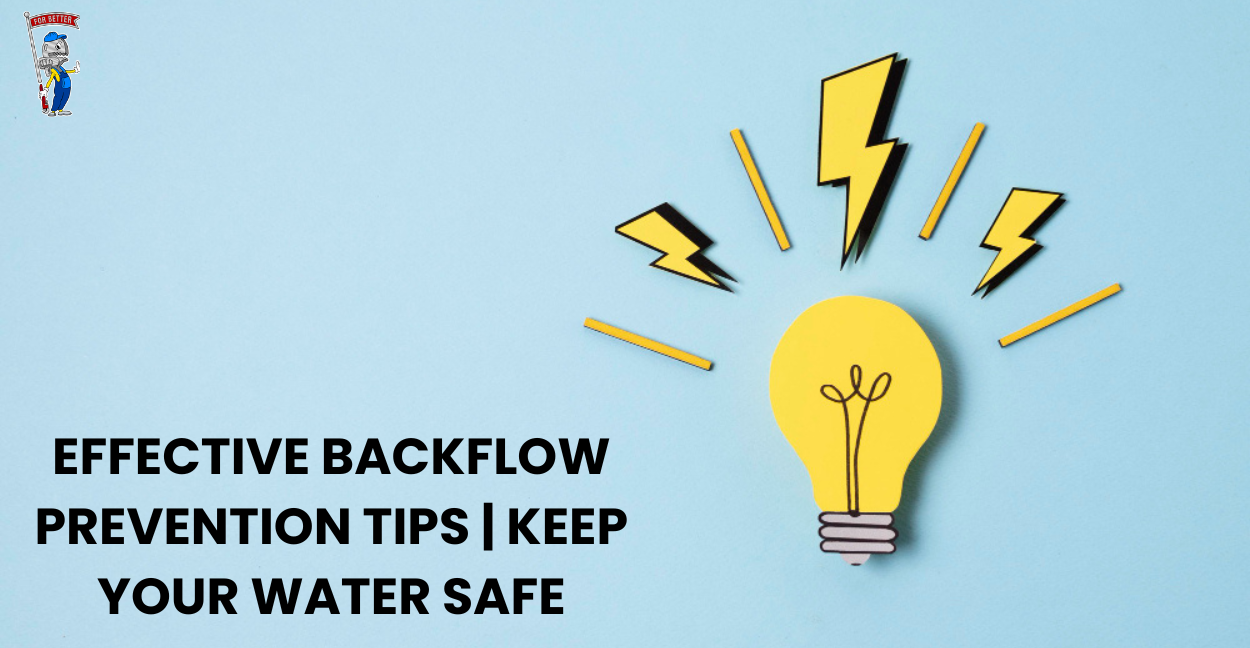Today we’ll delve into essential backflow prevention tips to ensure the safety and reliability of your water system. Backflow, the unwanted reverse flow of water in a plumbing system, can lead to contamination and health hazards. By implementing these tips, you can protect your water supply and maintain a healthy environment.
Understanding Backflow and Its Risks
Before we dive into prevention tips, let’s understand what backflow is and why it’s a concern.
Backflow occurs when the normal flow of water is reversed, potentially drawing contaminants into the clean water supply. This can happen due to back pressure or back-siphonage, both of which pose risks to water quality and safety.
5 Backflow Prevention Tips
1.) Regular Inspection and Maintenance
Regular inspection and maintenance of your backflow prevention devices are crucial. Schedule professional inspections at least once a year to ensure the devices are functioning correctly. Look out for signs of wear and tear, leaks, and any abnormalities that may compromise their effectiveness.
2.) Choose the Right Backflow Prevention Device
Selecting the appropriate backflow prevention device for your specific plumbing system is essential. Consult with a professional to determine the best type of device based on your needs, such as air gap devices, double-check valves, or reduced pressure zone (RPZ) assemblies.
3.) Install Backflow Prevention Devices Correctly
Proper installation of backflow prevention devices is critical. Ensure they are installed according to manufacturer guidelines and local regulations. Incorrect installation can render the devices ineffective and lead to potential backflow incidents. You can learn more about the Common Backflow Preventer Installation Mistakes here.
4.) Maintain Adequate Water Pressure
Maintaining adequate water pressure in your plumbing system helps prevent backflow due to back pressure. Monitor and regulate water pressure to ensure it remains within safe limits and doesn’t exceed the capacity of your backflow prevention devices.
5.) Educate and Train Personnel
If you’re managing a commercial or industrial facility, educate and train your personnel on backflow prevention practices. Ensure they understand the importance of maintaining a backflow-free environment and know how to identify potential issues.
6.) Conduct Backflow Testing
Regular backflow testing is essential to verify the functionality of your backflow prevention devices. Schedule testing by certified professionals to ensure compliance with regulations and the continued effectiveness of your systems.
Implementing these backflow prevention tips is crucial for safeguarding your water system and preventing contamination risks. Regular inspection, correct installation, proper device selection, maintenance of water pressure, education, training, and testing are key aspects of an effective backflow prevention strategy.
Ensure the safety and integrity of your water system by implementing these backflow prevention tips. Contact Backflow Services Done Right today for professional inspection, installation, maintenance, and testing services to protect your water supply from backflow risks.
Benefits of Effective Backflow Prevention
Now, we will explore the benefits of effective backflow prevention and why it is crucial for maintaining clean and safe water in your plumbing system.
Protection Against Contamination
One of the primary benefits of effective backflow prevention is protection against contamination. Backflow can introduce pollutants, chemicals, and pathogens into the clean water supply, compromising water quality and safety. By installing and maintaining backflow prevention devices, you create a barrier that prevents contaminated water from entering your plumbing system, ensuring that the water remains clean and suitable for consumption.
Compliance with Regulations
Effective backflow prevention helps you comply with regulatory requirements. Many jurisdictions mandate the installation of backflow prevention devices in certain plumbing systems to protect public health and water quality. By proactively implementing backflow prevention measures, you demonstrate your commitment to regulatory compliance and contribute to a safer environment for everyone.
Cost Savings
Investing in effective backflow prevention can result in significant cost savings in the long run. Contamination incidents due to backflow can lead to costly repairs, water treatment, and legal liabilities. By preventing backflow from occurring in the first place, you avoid these expenses and minimize the financial impact on your budget.
Preservation of Water Resources
Backflow prevention contributes to the preservation of water resources by reducing wastage and contamination. When backflow incidents occur, clean water is lost, and contaminated water requires treatment or disposal. By preventing backflow, you conserve precious water resources and minimize the need for additional water treatment processes.
Protection of Public Health
Effective backflow prevention is essential for protecting public health. Contaminated water resulting from backflow can pose serious health risks to consumers, leading to illnesses and potential outbreaks. By maintaining a backflow-free environment, you contribute to a healthier community and reduce the likelihood of water-related health issues.
Operational Continuity
Backflow incidents can disrupt operational continuity in residential, commercial, and industrial settings. Water contamination can lead to facility shutdowns, production delays, and service interruptions. By preventing backflow, you ensure uninterrupted operations and minimize disruptions that can impact productivity and customer satisfaction.
Enhanced Reputation
Maintaining effective backflow prevention measures enhances your reputation as a responsible and trustworthy entity. Customers, clients, and stakeholders value organizations that prioritize water safety and environmental stewardship. By demonstrating your commitment to backflow prevention, you build trust and credibility within your community and industry.
Frequently Asked Questions (FAQs)
1.) How does backflow prevention work?
Backflow prevention devices create barriers or air gaps to prevent contaminated water from flowing back into clean water supplies.
2.) Are backflow prevention devices required by law?
Yes, many jurisdictions have regulations mandating the installation of backflow prevention devices in certain plumbing systems to protect water quality.
3.) Can backflow prevention save money for businesses and homeowners?
Yes, effective backflow prevention can lead to cost savings by avoiding expensive repairs, water treatment, and legal liabilities associated with contamination incidents.
4.) What are some common backflow prevention devices?
Common backflow prevention devices include double check valves, reduced pressure zone (RPZ) assemblies, and air gap devices.
5.) How often should backflow prevention devices be tested and maintained?
Backflow prevention devices should be tested annually and maintained regularly by certified professionals to ensure their proper functioning and compliance with regulations.
Take proactive steps to protect your water supply and enjoy the benefits of effective backflow prevention. Contact us today for professional consultation, installation, and maintenance services to safeguard your plumbing system and promote water safety for all.



